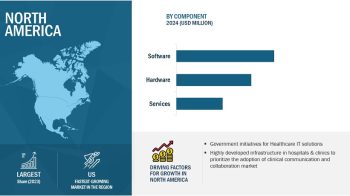The study involved two major activities in estimating the current market size of the human microbiome market. Exhaustive research was conducted to collect information on the market as well as its peer and parent markets.
The next step was to validate these findings, assumptions, and sizing with industry experts across the value chain through primary research. Both top-down and bottom-up approaches were employed to estimate the complete market size. After that, market breakdown and data triangulation were used to estimate the market size of segments and subsegments.
This Study Will Also Help You With the Details on:
# Covid Impact on Human Microbiome Market, growth/decline in product type/use cases of Human Microbiome Market due to cascaded impact of Covid on Extended Ecosystem.
# How top 50 companies in Human Microbiome Market are making rapid shifts in their strategies as we speak here.
# Outside-in view of top 50 companies client and client’s clients shifting short-term priorities.
Microbiomes are responsible for a wide variety of metabolic and developmental processes—from food digestion to vitamin synthesis and even brain function. They also play a major role in human conditions, such as obesity and inflammatory bowel disease.
Download PDF Brochure@
https://www.marketsandmarkets.com/pdfdownloadNew.asp?id=37621904
Market growth is largely driven by the increasing focus on the development of human microbiome therapy. It has also become a validated target for drug development. The growing number of collaborations between market players is expected to offer a wide range of growth opportunities for market players during the forecast period. However, a lack of expertise and detailed research on the human microbiome is restraining the growth of this market.
The global human microbiome market is projected to reach USD 1,731 million in 2027 from USD 942 million in 2024, at CAGR of 22.5 % during the forecast period.
The infectious diseases segment to account for the largest share of the market in 2022
Based on disease, the human microbiome market is segmented into five categories—infectious diseases, endocrine & metabolic disorders, inflammatory diseases, cancer, and other diseases. The infectious disease segment is expected to dominate the market in 2022. This is due to the increasing research in microbiome-based products and their use in treating infectious diseases. Many smaller companies are investing in research, and their major focus is on developing products targeting microbiome modulators for infectious diseases.
Recent Developments:
# In 2019, Seres collaborated with AstraZeneca to get a better understanding of the microbiome in augmenting the efficacy of cancer immunotherapy, including potential synergy with AstraZeneca compounds.
# In 2018, Enterome entered into a co-development and co-promotion agreement with Takeda for its investigational drug candidate EB8018. This drug is used in patients with Crohn’s disease and has the potential to expand its use to other gastrointestinal (GI) disorders and liver diseases.
# In 2016, 4D Pharma acquired the production assets of Instituto Biomar to expand its clinical and production capabilities of live biotherapeutics.
Europe to account for the largest share of the human microbiome market in 2022
On the basis of region, the global human microbiome market is segmented into four major geographies— North America, Europe, the Asia Pacific, and the Rest of the World (RoW). Europe is expected to account for the largest share of the global human microbiome market in 2022. The large share of this regional segment is mainly due to the high research activity in this region.
Request Sample Pages@
https://www.marketsandmarkets.com/requestsampleNew.asp?id=37621904
Major Industry Leaders:
The major players in the human microbiome market include Enterome Bioscience (France), E.I. du Pont de Nemours and Company (DuPont) (US), 4D Pharma (UK), and Seres Therapeutics (US).
Various growth strategies have been adopted by these players, such as product launches, agreements, and acquisitions to increase their presence in the global human microbiome market.

